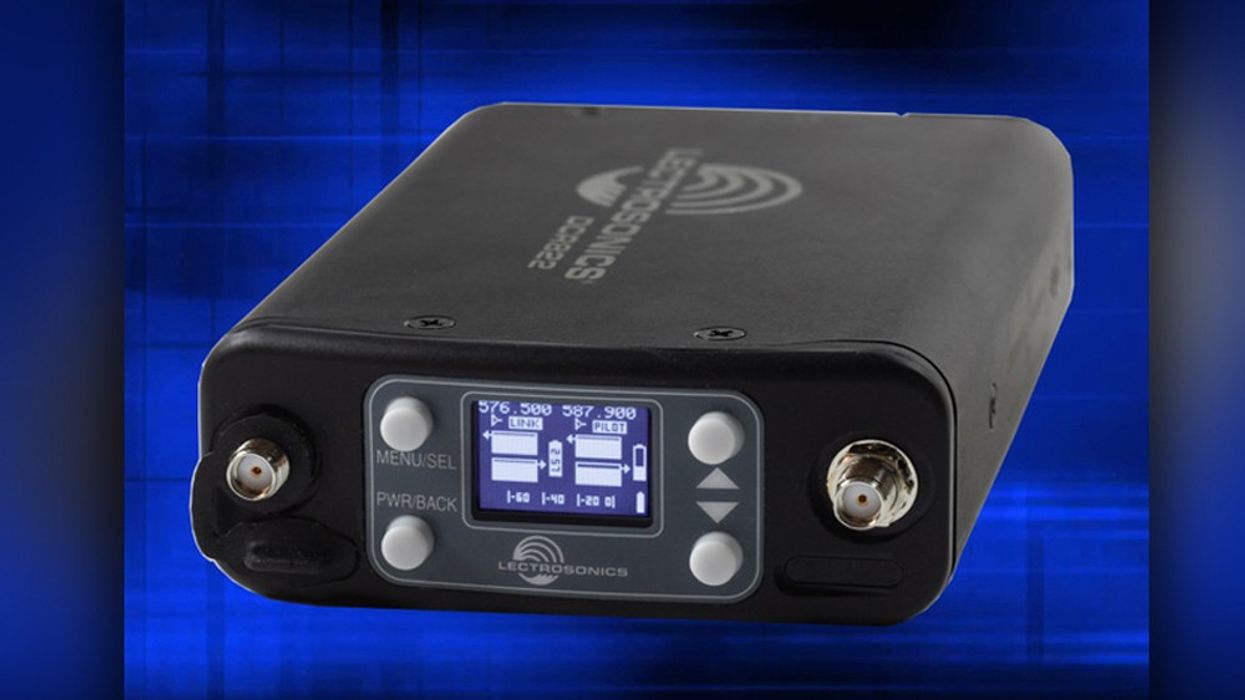The New Lectrosonics DCR822 Receiver Can Record Audio at the Same Time
Lectrosonics adds to its growing digital wireless series.

After announcing the DCHR digital receiver, Lectrosonics has introduced the DCR822, a dual-channel digital receiver that's backward compatible with any of its Digital Hybrid Wireless transmitters that includes the SMV, SMQV, SSM, and HMa plug-on.
The DCR822 has a wide tuning range and will come in two models covering frequency ranges from 470-614 MHz or 537-691 MHz. If you're located inside the United States, you're going to want to go with the 470-614 MHz model. However, both versions provide dual independent channels, clean 24-bit 48 kHz audio, two locking TA3M connectors with either analog mic/line level or AES3 digital output, and a built-in RF spectrum analyzer and SmartTune feature that removes the guesswork when finding the best audio channel on location.
To briefly explain, when it comes to wireless systems, even with video, there can be a dropout or noise introduced to the signal. This is because wireless signals are waves, and the antenna of a receiver not only receives the signal from the transmitter, but it also receives indirect signals from other sources. If the signal from the indirect source is stronger than the signal from the transmitter, it can cause a drop-out or add noise to the track.
What's been considered the best way to avoid any issues is using a true diversity receiver which uses two antennas to receive the signal. There's more to it, but to simply state it, two antennas are better than one. Vector diversity is similar to true diversity in its effectiveness, but it's geared towards digital wireless transmission rather than an analog signal. Lectrosonics has written a White Paper about it, but essentially, the technology combines RF signals from two receiver front ends per channel using different phase angles in order to maximize the signal. In doing so, you can expect clean audio. We'll have to test out just how well vector diversity does in the field, but we don't expect it to be any less effective than true diversity.
Another feature of the DCR822 is its ability to record audio directly to a microSD card while simultaneously outputting audio. That feature might sound familiar, and you're correct. Zaxcom pioneered simultaneous audio transmission and recording to memory cards with its digital wireless audio, but they do so on the transmitter side. Lectrosonics is approaching it on the receiver side where it can record up to 4 channels of audio depending on the RX mode. Deity is another wireless audio company doing something similar with microSD card recording. Besides recording audio, the microSD card slot on the DCR822 can be used to update the firmware or adjust the frequency group.
Like other Lectrosonics wireless, it's made from a machined aluminum housing to withstand the harsh conditions of production. It's powered by 4 AA lithium batteries and is compatible with Lectrosonics' digital transmitters, which include the DCHT bodypack and the DPR plug-on, as well the aforementioned Digital Hybrid Wireless series. So feel free to mix and match the DCR822 with your current Lectro gear.
Expect the DCR822 to start shipping later this year for around $4740.
Source: Lectrosonics













